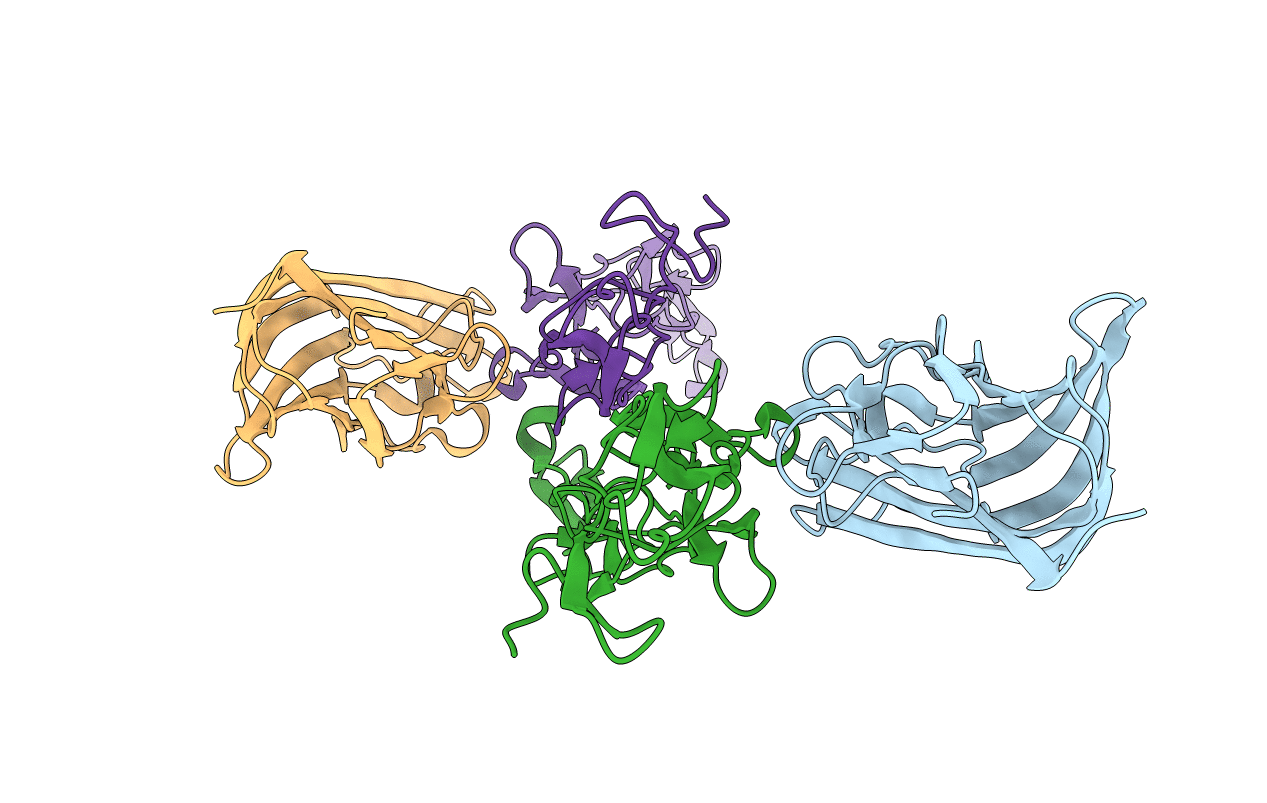
Deposition Date
2011-01-13
Release Date
2011-03-02
Last Version Date
2024-10-16
Entry Detail
PDB ID:
3QBQ
Keywords:
Title:
Crystal structure of extracellular domains of mouse RANK-RANKL complex
Biological Source:
Source Organism:
Mus musculus (Taxon ID: 10090)
Host Organism:
Method Details:
Experimental Method:
Resolution:
2.50 Å
R-Value Free:
0.24
R-Value Work:
0.22
Space Group:
P 3


